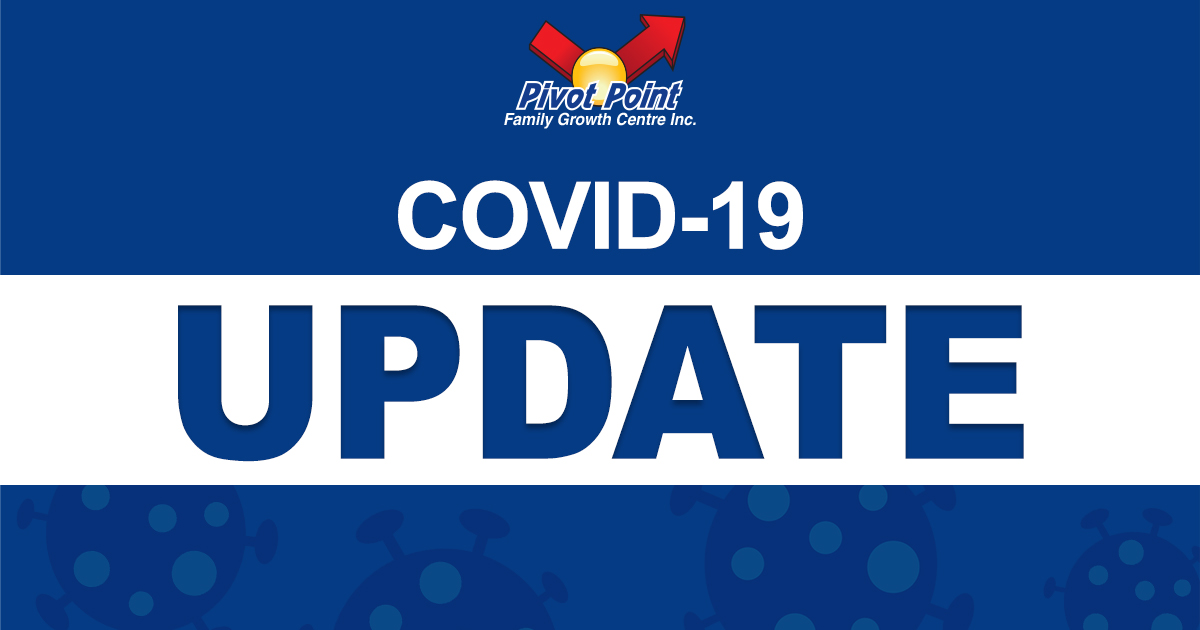Navigating the ADHD Journey: Myths, Challenges, and Superpowers
December 1, 2023

 |
By: Pivot Point Family Growth Centre |
Navigating the ADHD Journey: Myths, Challenges, and Superpowers
Attention Deficit Hyperactivity Disorder (ADHD) has long been shrouded in myths and misconceptions, leaving many children, youth and adults struggling without a diagnosis. Over the years, the understanding of ADHD has evolved, revealing both the challenges and superpowers that come with this unique neurodevelopmental condition. For those who discover their ADHD later in life, connecting the dots can be a transformative experience, offering a new lens through which to view their past and a roadmap for a brighter future.
Mythbusting ADHD
One prevalent myth surrounding ADHD is that it is a disorder confined to childhood, disappearing as individuals grow older. While it is true that the more prominent cases of ADHD are usually diagnosed in childhood, many individuals aren’t assessed until they are teens or adults. This suggests that many individuals with milder symptoms may go undiagnosed through their teens, or their entire lives. As for persistence, yes, the underlying ADHD condition often remains well into adulthood, presenting challenges along the way.
 However, each individual’s profile of symptoms may change. For about one-third of individuals, many of the more prominent symptoms (such as pronounced hyperactivity or intense emotional dysregulation) fade or disappear through puberty. This is why the stereotype of a hyperactive child, may not fit many adults with ADHD who are more likely to display symptoms like impulsivity, difficulty focusing, and poor time management or organizational skills.
However, each individual’s profile of symptoms may change. For about one-third of individuals, many of the more prominent symptoms (such as pronounced hyperactivity or intense emotional dysregulation) fade or disappear through puberty. This is why the stereotype of a hyperactive child, may not fit many adults with ADHD who are more likely to display symptoms like impulsivity, difficulty focusing, and poor time management or organizational skills.
A common misconception is that only boys have ADHD. While it is true that boys with very noticeable hyperactivity and impulsivity are likely to stand out from their peers at an early age (resulting in many more boys than girls with the diagnosis) that doesn’t mean that girls aren’t affected by ADHD too. However, for many girls, the symptoms are more subtle or even socially advantageous or encouraged by peers or adults. Girls lost in bouts of daydreaming or inattention, or who are socially disengaged or under participating in cognitive tasks but eagerly engage in social play, can often get overlooked and unrecognized for their struggles.
Another myth suggests that ADHD is merely an excuse for laziness or a lack of discipline. However, ADHD is a neurobiological condition, and individuals with this disorder often face genuine difficulties in areas related to executive functioning (more on this later) which can show up as struggles with time management, over-focus and under-focus, and emotional regulation challenges. Understanding ADHD as a legitimate neurodevelopmental condition is crucial to dispelling such misconceptions.
So, what is ADHD?
 ADHD is a cluster of symptoms that are common to individuals who have a slow or UNDERFUNCTIONING prefrontal cortex. This is the part of the brain responsible for many executive functions such as complex problem solving, anticipating and planning, sequencing and organizing, as well as time and emotional management, and many more. In other words, when the frontal parts of the brain are performing slowly or poorly, nearly all of the executive functions of the brain become unregulated. From this lens, the symptoms of ADHD are best thought of as the “absence of controls”: Hyperactivity and impulsivity result when a brain can’t hold back impulsive actions; emotions can rule (based on what feels good or avoids pain) over logical decision making when emotions can’t be dialed down or set aside to allow for thinking; the importance of time, or the steps necessary to reach a time deadline, or the momentary experiences of others can all fall out of awareness in a brain unable to set aside its own fascinations in the moment. For most individuals with ADHD, the underlying skills and the desire to share those with the world are there… beneath the surface. But if they don’t learn that about themselves, or if the judgements of others are too harsh, some youth and adults with ADHD can spend a lifetime suffering.
ADHD is a cluster of symptoms that are common to individuals who have a slow or UNDERFUNCTIONING prefrontal cortex. This is the part of the brain responsible for many executive functions such as complex problem solving, anticipating and planning, sequencing and organizing, as well as time and emotional management, and many more. In other words, when the frontal parts of the brain are performing slowly or poorly, nearly all of the executive functions of the brain become unregulated. From this lens, the symptoms of ADHD are best thought of as the “absence of controls”: Hyperactivity and impulsivity result when a brain can’t hold back impulsive actions; emotions can rule (based on what feels good or avoids pain) over logical decision making when emotions can’t be dialed down or set aside to allow for thinking; the importance of time, or the steps necessary to reach a time deadline, or the momentary experiences of others can all fall out of awareness in a brain unable to set aside its own fascinations in the moment. For most individuals with ADHD, the underlying skills and the desire to share those with the world are there… beneath the surface. But if they don’t learn that about themselves, or if the judgements of others are too harsh, some youth and adults with ADHD can spend a lifetime suffering.
Challenges Faced by Adults with ADHD, Including the Impact on Mental Health
Undiagnosed and untreated ADHD can exert a profound impact on mental health, contributing to a range of emotional struggles. The constant battle with executive functions, such as poor planning and organization, being late, or underperforming at school or work can leave a person feeling inadequate, or like a failure compared to their peers. Their sense of self (identity) and how they feel about themselves (self-esteem) can remain at very unhealthy low levels. Further frustrations, stemming from difficulties in meeting societal expectations and personal goals may trigger chronic stress and anxiety, or feelings of hopelessness and depression.
Many adults with ADHD may find themselves grappling with a persistent sense of underachievement, which can fuel a negative internal dialogue. Left unaddressed, these mental health challenges can create a cycle of self-doubt, exacerbating the difficulties associated with ADHD.
The Importance of Acknowledging Mental Health
Nearly all individuals with symptoms of ADHD were born with brains that have a slower prefrontal cortex: It’s not their fault! Learning about executive functioning, and the brain performance dynamics that create ADHD is the first place to begin.
Acknowledging the impact of ADHD on mental health is the next crucial step in the journey toward holistic well-being. Understanding that the emotional struggles are not a personal failing, but a consequence of a neurobiological condition can help break the stigma surrounding mental health struggles. This acknowledgment fosters self-compassion, empowering individuals to seek the support they need without shame or judgment.
Relative Solutions for Mental Health Challenges
| 1. Therapy and Counseling: Professional therapy, particularly cognitive-behavioral therapy (CBT), can be immensely beneficial. Therapists can help individuals develop coping mechanisms, manage stress, and reframe negative thought patterns. Group therapy or support groups can also provide a sense of community and shared understanding of what it actually means to have ADHD. Professional therapies can also teach strategies to systematically strengthen many areas of executive function deficits. | |
2. Neurofeedback: The slow / underperformance of the prefrontal cortex that is so typical of ADHD can be trained through brainwave biofeedback! This form of treatment quickens brain activity, enhances executive functions, is painless, and can last for years or decades. |
|
| 3. Mindfulness and Meditation: Practices that promote mindfulness and meditation can be powerful tools for managing the emotional impact of ADHD. These techniques help individuals stay present in the moment, more aware of themselves and others, reduce excess worry, and enhance overall emotional well-being.
|
|
| 4. Medication Management: For some individuals, medication prescribed by a qualified healthcare professional can be an effective component of treatment. Medications such as stimulants or non-stimulants (both of which increase activity in the prefrontal cortex) can help improve executive functions and therefore the symptoms and struggles of ADHD. | |
5. Exercise and Healthy Lifestyle: Regular physical activity has been shown to have positive effects on mental health. Incorporating exercise into a daily routine can help reduce stress, improve mood, and enhance overall cognitive function. |
|
6. Educating Support Systems: Ensuring that friends, family, and colleagues are aware of the mental health challenges associated with ADHD is crucial. This awareness can lead to a more supportive home, school or work environment, fostering understanding and reducing the potential for judgment. |
Addressing the mental health impact of ADHD is integral to the overall well-being of teens and adults navigating this neurodevelopmental condition. By acknowledging the emotional challenges, individuals can embark on a journey of self-discovery and healing. Implementing a combination of therapeutic interventions, lifestyle adjustments, and a supportive network can significantly enhance mental health outcomes. It is essential to recognize that mental health is an integral part of the ADHD experience, and prioritizing it is a key step toward achieving a balanced and fulfilling life.
Connecting the Dots: The Aha Moment and Improved Mental Health
 For many adults, the turning point comes when they finally connect the dots and realize that ADHD has been an underlying factor in their life challenges. The “aha moment” can be both liberating and overwhelming, as individuals suddenly understand why they’ve faced certain difficulties for years. This realization extends beyond the recognition of behavioral patterns; it encompasses the impact of ADHD on their own mental health, and on the impacts they’ve had on others.
For many adults, the turning point comes when they finally connect the dots and realize that ADHD has been an underlying factor in their life challenges. The “aha moment” can be both liberating and overwhelming, as individuals suddenly understand why they’ve faced certain difficulties for years. This realization extends beyond the recognition of behavioral patterns; it encompasses the impact of ADHD on their own mental health, and on the impacts they’ve had on others.
Discovering one’s ADHD can be like finding a missing puzzle piece. Suddenly, behaviors and struggles that seemed inexplicable now make sense within the context of ADHD. This newfound awareness allows individuals to reevaluate their past, offering a fresh perspective that fosters self-compassion and understanding.
Understanding the link between ADHD and mental health challenges is a crucial aspect of the “aha moment.” As individuals connect the dots between their neurodevelopmental condition and the emotional struggles they’ve faced, a sense of relief often follows. Knowing that the difficulties in managing stress, anxiety, and self-esteem are not personal failings but manifestations of ADHD provides a foundation for improved mental health.
The “aha moment” becomes a catalyst for seeking the support needed to address mental health concerns. It is a realization that prompts individuals to prioritize their emotional well-being as an integral part of managing ADHD. Armed with this understanding, they can embark on a journey of self-discovery, often seeking therapy or counseling to develop coping strategies tailored to both the neurobiological and emotional aspects of their condition.
Furthermore, the “aha moment” serves as a bridge between self-awareness and self-acceptance. Embracing the diagnosis and acknowledging the impact on mental health are crucial steps in breaking the stigma surrounding ADHD-related emotional struggles. This acceptance fosters a proactive approach to mental health, encouraging individuals to explore various interventions and build a support network that understands and validates their experiences.
In essence, the “aha moment” is not just about recognizing the challenges posed by ADHD but also understanding how addressing these challenges positively influences mental health. It marks the beginning of a holistic approach to well-being, where individuals can actively work towards creating a life that accommodates their neurodiversity while nurturing their emotional resilience. As the pieces of the puzzle fall into place, individuals with ADHD can find a path to improved mental health, laying the groundwork for a more fulfilling and balanced life.
Embracing the Superpowers
 While ADHD brings its fair share of challenges, it also comes with unique strengths and superpowers. Creativity, hyperfocus, calm reasoning in the face of high pressure situations, and an ability to think outside the box are just a few common strengths of individuals with ADHD. Once armed with the knowledge of their condition, teens and adults can harness these superpowers to their advantage.
While ADHD brings its fair share of challenges, it also comes with unique strengths and superpowers. Creativity, hyperfocus, calm reasoning in the face of high pressure situations, and an ability to think outside the box are just a few common strengths of individuals with ADHD. Once armed with the knowledge of their condition, teens and adults can harness these superpowers to their advantage.
Hyperfocus, for instance, allows individuals with ADHD to immerse themselves fully in tasks they find engaging, often leading to remarkable productivity. Recognizing and embracing these strengths can be a transformative part of the journey toward self-acceptance and success.
Many high stress, fast paced careers are over-represented by people with ADHD: From NHL Goalies, to paramedics and first responders, to driving cars or flying planes, to stock trading and tour guiding… many people with ADHD can outperform their peers!
Finding a Better Place in Life
Understanding and accepting one’s ADHD is a crucial step toward finding a better place in life. Armed with knowledge, individuals can seek out strategies and tools to manage their challenges effectively. This may involve NFB therapy, medication, lifestyle adjustments, and developing coping mechanisms tailored to their unique needs.
Building a support network is equally vital. Connecting with others who share similar experiences can provide a sense of community and validation. Additionally, educating friends, family, and colleagues about ADHD fosters understanding and opens the door to a more supportive environment.
Conclusion
The journey of discovering and embracing ADHD as a teen or adult is one of resilience, self-discovery, and empowerment. Dispelling myths, navigating challenges, and unlocking superpowers are integral parts of this transformative process. With the right understanding, support, and tools, teens and adults with ADHD can not only overcome the obstacles they face but also thrive, finding fulfillment in both personal and professional aspects of life. Embracing one’s neurodiversity is not just a path to self-acceptance but a gateway to unlocking untapped potential and creating a brighter future.


 Ontario Regional Manager
Ontario Regional Manager

 Complex Care Program Manager
Complex Care Program Manager Adult Services & Transition Planning Program Manager
Adult Services & Transition Planning Program Manager



